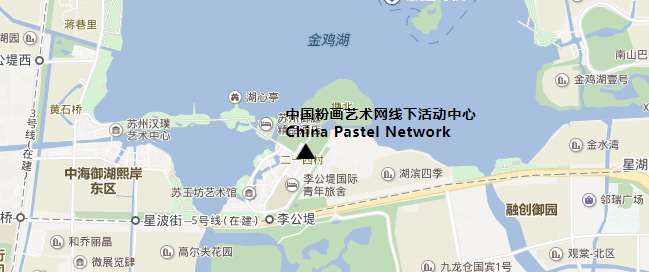前 言
PREFACE
几千年来,艺术家们用缤纷的色彩和高超的技巧描绘了一部精彩的人类发展史。他们有着丰富的想象力和创造力,重塑着历史章节和生活中的细微点滴,启迪我们重新发现曾经的惊涛骇浪以及生活的平凡之美。
粉画是其中的一个画种,无需借助任何介质,本身有着稳定而鲜艳的色彩。它利用色粉的覆盖以及笔触的灵动来作画,既能厚重深刻,也能轻描淡写,可具象写实,也可抽象写意,具有丰富的、极强的艺术表现力。
“粉画”一词,是由英文Pastel翻译而来,又译作色粉画、粉笔画、粉彩画,它大约有500年的历史,由素描演变而来。粉画可以追溯到距今一万多年前的旧石器时代,那些古老而神秘的洞穴壁画,以带颜色的矿石或石粉为颜料,粗矿的线条,浓郁的色块,描绘着生产和生活的场景。广义地说,这应该是粉画的起源。
到了十三世纪的欧洲,随着文艺复兴的浪潮,粉画艺术也在欧洲萌芽。十七、十八世纪欧洲粉画艺术的发展迎来了巅峰,我们耳熟能详的粉画巨匠很多都诞生于这个时代。小汉斯-荷尔拜因、让-夏尔丹、米勒、德加、卡萨特、马奈等等。粉画艺术成为主流艺术形式里不容忽视的一部分。
伴随着世界粉画的发展,中国画家也开始接触粉画。1919年,留学归国的李超士将粉画引入中国,受到徐悲鸿、刘海粟、潘玉良、颜文樑等艺术家的支持,曾在上海风靡一时。然而受战争影响,粉画发展刚刚起步即遭受挫折。直到上世纪七十年代末,颜文樑、刘汝醴、黄养辉、卢鸿基、丁正献等5人发起由11人作品参加的中国第一次粉画联展后,引起中国美术家协会重视,粉画开始在中国复苏。此后,丁正献、杭鸣时等粉画家又扛起了推动中国粉画发展的旗帜。
在老一代粉画艺术家的带领下,通过三十多年的不懈努力,中国粉画取得了快速的发展。粉画创作队伍逐渐扩大,许多地方自发地建立了粉画组织,粉画艺术逐步走入大众生活,同时粉画国际交流活动日趋频繁。这就是创立粉画艺术博物馆的历史背景。
作为中国第一家粉画艺术博物馆,我们将加强与国内外艺术机构和艺术家的合作,致力于凝聚粉画力量和资源,搭建各国艺术家之间相互学习的平台,积极推进博物馆征集典藏、展示交流和学术研究工作。我们相信,在大家的共同努力下,中国粉画一定会更加蓬勃地发展,粉画艺术一定会拥有一个更加美好的明天!
For thousands of years, artists have painted a brilliant history of human development with colors and superb techniques. Their imagination and creativity reshaped our view of life, enlightening us to rediscover the past and the ordinary beauty in everyday life.
Without the need of drawing support from other materials, pastel is one of the media that offers stable and vivid colors. It creates a a rich hue with the coverage of pastel and characteristic strokes. Pastel paintings could be deep and figurative; they could also be deliberate or abstract. It is a medium that allows rich artistic expressions.
In Chinese, pastel is translated to "fenhua", or "sefenhua, fenbihua, fencaihua". Evolved from sketch about 500 years ago, the origin of pastel can be traced back to the Paleolithic age dating back to more than 10,000 years ago when the ancient and mysterious cave paintings were made by red and yellow ochre, hematite, manganese oxide and charcoal. The bold lines and vivid colors depicted the ancient living scenes. It could be considered as the origin of pastel in a broader sense.
In the thirteenth century, the art of pastel originated in Europe with the surge of Renaissance. The development of European pastel art ushered in the pinnacle later in the seventeenth and eighteenth centuries. That was the time for pastel masters such as Holbein, Chardin, Millet, Degas, Cassatt, Manet, and so on. It was them who make pastel part of the mainstream art forms that cannot be neglected.
While the influence of pastel art was growing in the world, pastel was introduced to Chinese artists when Li Chaoshi returned from France in 1919. Supported by Xu Beihong, Liu Haisu, Pan Yuliang, Yan Wenliang and other artists, pastel became popular in Shanghai. However, the development of pastel was shortly setback because of the war. It was not until the end of 1970s that Yan Wenliang, Liu Ruli, Huang Yanghui, Lu Hongji and Ding Zhengxian organized the first-ever Pastel Exhibition in China in which 11 artists took part. Pastel art re-entered public spotlight and caused China Artists’ Association’s attention. After that, Ding Zhengxian, Hang Mingshi and other pastel painters took on the responsibility of promoting pastel in China.
Guided by the old generation pastel artists, through more than thirty years of unremitting efforts, pastel art in China has achieved rapid development. pastel art gradually integrated into public life: number of artists working in pastel gradually expanded; more pastel organizations were established regionally; International exchange activities happened more frequently. That is as well the historical background of the foundation of the museum of pastel art.
As the first China-based museum dedicated in pastel art, we will strengthen the cooperation with Chinese and international art institutions and artists, devoting ourselves to unite the pastel talents and resources. We strive to create a platform for international artistic exchange, and to promote the collection, display and academic research in the pastel field. It is believed that together with our efforts, pastel will flourish in China and there will be a better future for pastel art.

TEL:0512-68183890
ADD:苏州市李公堤四期12幢
(No.12 Li Gong Di-Four, Suzhou Ind. Park)
ZIP:215021